Discover professional-grade sound and vibration meters, monitoring stations, dosimeters, and essential accessories from SVANTEK. Built for precision and reliability, our solutions are trusted across industries—including environmental monitoring, occupational health, and industrial diagnostics. Select the right instruments and accessories for your measurement needs with SVANTEK.
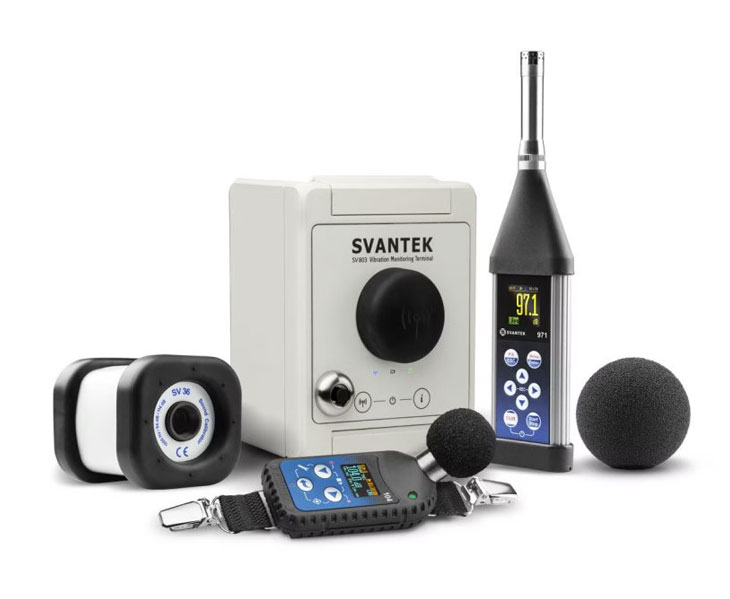
Show all
Software
Firmware
SvanNET
Transducers
Accessories
Cables
Power supplies
Peripheries
Servers
Monitoring cases
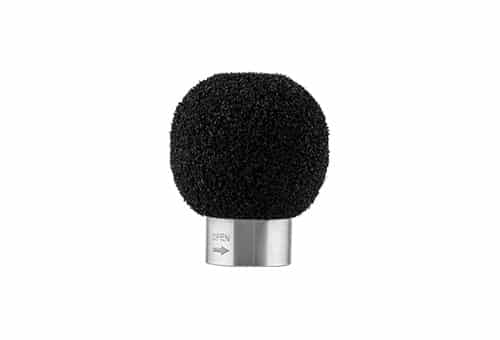
SA122A-3 is a pack of 3 spare windscreens for SV 104 and SV 104A noise dosimeters. The use of a windscreen is obligatory when measuring with a noise dosimeter. A windscreen protects the microphone against dust particles and airborne interference. It is important to monitor the windscreen surface and replace it whenever damages are detected.
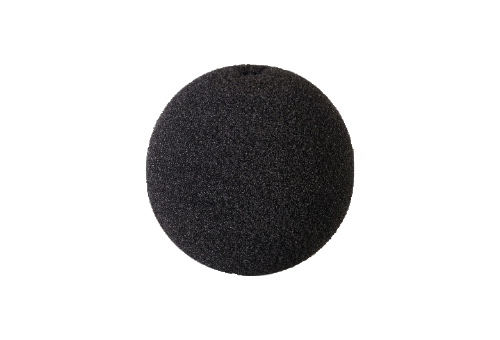
SA 22 is a windscreen for SVANTEK sound level meters. The ISO and IEC measurement standards require a windscreen to be used in sound measurements to protect the microphone from dust particles and air-borne interferences. The surface of a windscreen should be examined periodically for any signs of damage to the material and replaced if necessary.
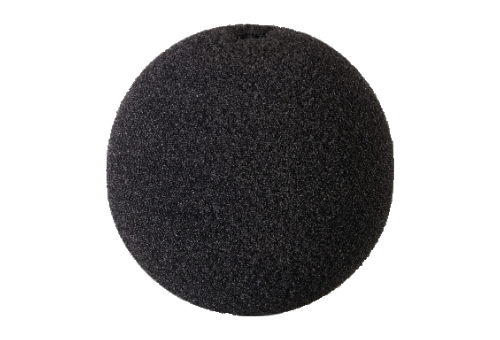
The SA 209 windscreen is used in Svantek Noise Monitoring Stations (SV307A, SV200A, SV25x PRO). The SA 209 diameter is 130 mm. The purpose of the windscreen is to attenuate the wind noise during outdoor measurements. Downwind propagation conditions for the noise measurement method specified in ISO 9613-2 and ISO 1996-2 take into account the wind speed between approximately 1 m/s and 5 m/s, measured at a height of 3 m to 11 m above the ground. Most of the outdoor measurement techniques follow ISO recommendations therefore the noise measurements are carried out in conditions up to the wind speed of 5 m/s. The higher readings of the wind speed are often measured at wind farms, as mentioned in the IEC 61400 standard, which for this purpose recommends the use of windscreens with a diameter at least of 90 mm. The windscreen plays an important role in outdoor noise measurements, therefore it should be examined regularly and replaced in case of any surface damage.
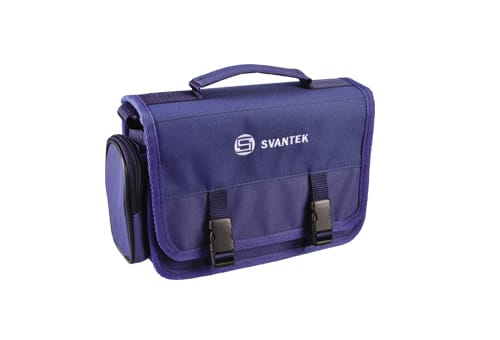
SA47 is a fabric shoulder bag for a Svantek sound or vibration level meter and its accessories, such as a sound calibrator. The bag is made of robust material and has reinforced edges to protect the valuable electronics carried inside the bag.
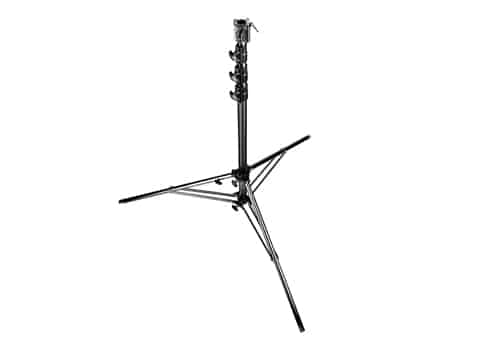
SA 206 is a heavy fold-out tripod for outdoor noise monitoring at 4 m. The tripod is recommended for semi-permanent noise monitoring stations such as SV 277 PRO, SV 279 PRO, or SV 258 PRO. The mounting thread is compatible with SA 27x outdoor noise monitoring kits.

SA 420B: Fold-out tripod Manfrotto 420B, 4m. The SA 420B is a professional tripod for Class 1 noise measurements with a sound level meter. It is recommended for applications such as building acoustics, environmental noise measurements, or occupational noise at work.
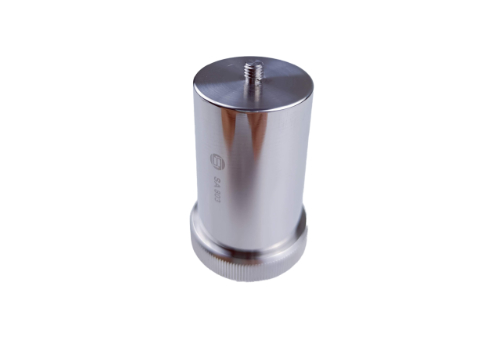
The SA 803 calibration adapter allows geophones used with the SV 803 Station to be checked with the SV 110 vibration calibrator. The kit includes the SC 814 cable to connect the geophone to the SV 803 station.

SA 306 – Mast arm with a bracket for mounting noise monitoring stations on a pole. The SA 306 is recommended for environmental noise monitoring with SV 200A and SV 307A noise monitoring stations.
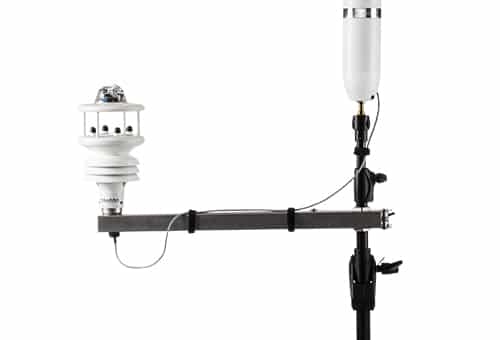
SA 276: Mast arm with a mounting bracket for the SP 276 weather station. The weather station can be connected directly to the SV 307A noise monitoring station with a cable. When measuring environmental noise in accordance with ISO 1996-2, simultaneous noise and weather conditions must be measured.
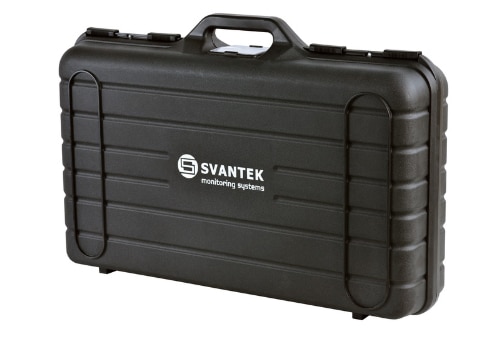
SA 200A Carrying case for SV 200A noise monitoring station. The SA 200A interior has been designed to fit the noise monitoring station and its accessories, including the power supply. The carrying case is convenient when transporting the equipment for short-term noise monitoring tasks.

SA 307 – Carrying case for SV 307 or SV 307A noise monitoring stations. The case interior has been designed to fit the instrument and all its accessories.
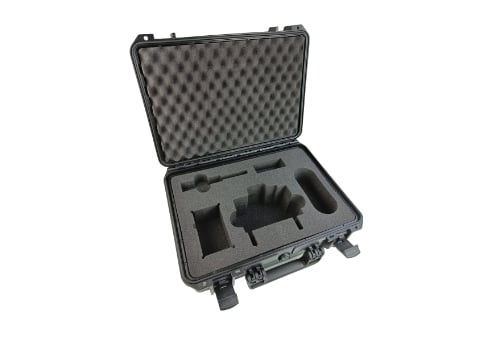
A dedicated case for the SV 803 station and optional accessories allow the fully assembled vibration monitoring station to be transported safely and installed efficiently in any environment.
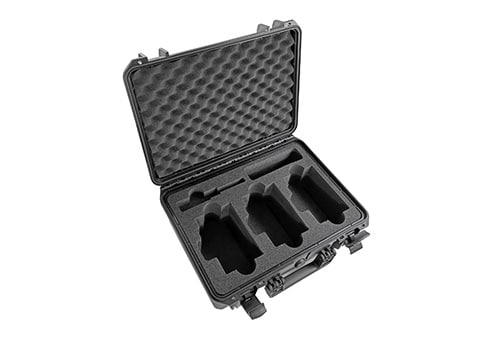
A dedicated transport case for three SV 803 vibration monitoring stations, together with essential accessories, allows the fully assembled stations to be streamlined and safely transported for easy on-site installation.
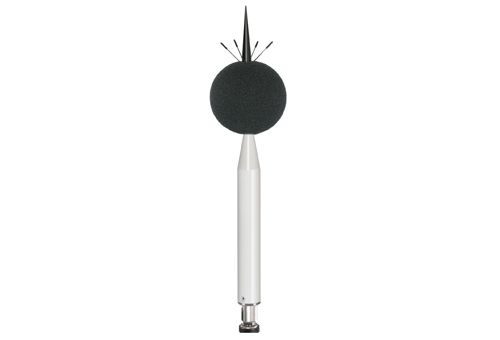
The SA 271D outdoor microphone kit is used with the SV 971A sound level meter for environmental noise measurements. The outdoor microphone kit is a housing for a preamplifier and microphone to protect them from weather conditions. The SA 271D is made of lightweight materials and is easy to install on a tripod. The solution is recommended for short-term and semi-permanent noise measurements in the environment. The use of the outdoor kit requires the extension cable between the instrument and its preamplifier. For an acoustic calibration, the windscreen can be detached to provide access to the microphone.

SA 277C: Outdoor microphone kit for the SVAN977C sound and vibration level meter. The outdoor kit protects the microphone and preamplifier when conducting noise monitoring tasks outdoors. The measurement cable SC 26 is required for connecting the meter with the preamplifier installed in the SA 277C. The microphone kit can be also used with SV 277 PRO noise monitoring station.

The SA 279 outdoor kit protects the SVAN 979‘s preamplifier and microphone from weather conditions. The use of the outdoor kit requires the extension cable between the instrument and its preamplifier. The SA 279 is made of lightweight materials and is easy to install on a tripod. The solution is recommended for short-term and semi-permanent noise measurements in the environment.
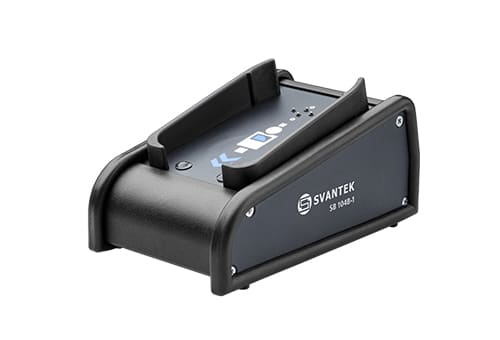
SB 104B-1: a single noise dosimeter docking station dedicated to the new SV 104Bis intrinsically safe dosimeter. The intrinsically safe noise dosimeter is not equipped with a USB port for safety reasons, which is why the docking station is required for charging the dosimeter battery and fast data download.
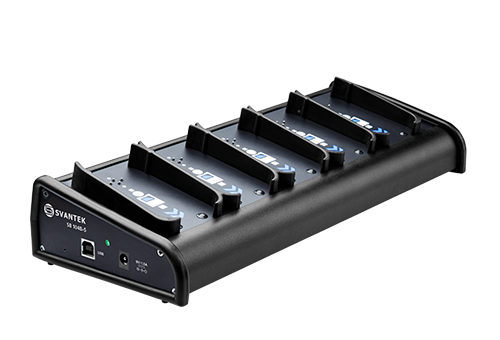
SB 104B-5: Docking station for 5 noise dosimeters. The docking station is used for battery charging and fast data download from new-generation noise dosimeters. The SB 104B-5 is capable of simultaneous battery recharging in 5 dosimeters when the power supply (included in the set) is connected to mains. The compatible dosimeters are SV 104Bis (intrinsically safe) and SV 104A.
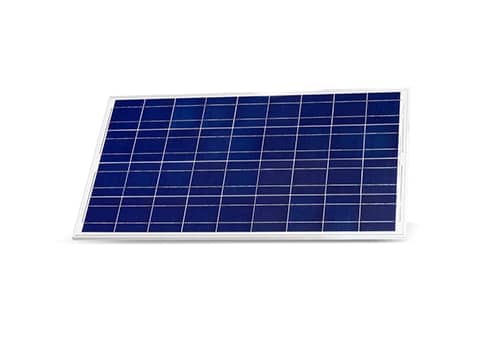
SB 271 solar panel (40 W of power) for SV 27x and SV 258 PRO monitoring stations with a dedicated 5 m cable The solar panel extends the battery’s operational time, depending on the amount of sunlight available in the area of installation. It is recommended for short-term noise and vibration monitoring installations. Monitoring the AC powering is recommended for long-term noise monitoring.

SB 371 solar panel (40 W of power) with a dedicated cable (5 meters in length) for connecting the SV307A noise monitoring station. The solar panel recharges the battery depending on the availability of sunlight.
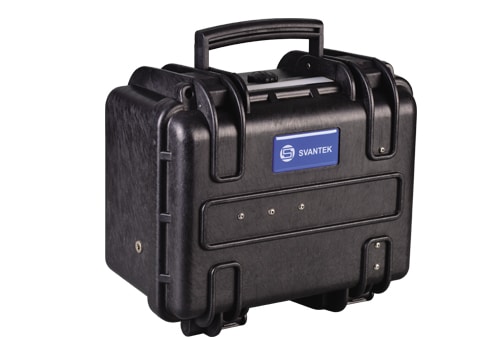
SB 272 External Battery (33 Ah) with a cable for connecting the SV 27x or SV 258 PRO noise and vibration monitoring stations. The battery is supplied with a charger for use at the doors. The battery should be charged before dispatching for noise or vibration monitoring tasks. SB 272 extends the operating time of the station’s battery.

SB 275 external battery (33 Ah) with a cable for the SV307A noise monitoring station. The use of batteries is dedicated to short-term environmental noise monitoring. The battery is supplied with a charger for indoor use. The SB 275 should be charged before dispatching to an outdoor noise monitoring task.

The SB 803 is a high-performance lithium-ion battery pack designed specifically for use with the Svantek SV 803 Wireless Vibration Monitor. With a nominal capacity of 217 Wh and an output voltage of 7.2 V, the battery pack is equipped with an intelligent charging module that is compatible with USB Type-C and USB Power Delivery power supplies. The user-friendly LED status bar displays the current charging status, ensuring easy and convenient use. With a wide operating temperature range and the ability to be charged from any power supply with a USB-C cable, the SB 803 is designed for reliability in all climates. The battery pack has dimensions of 120 x 108 x 75 mm and weighs 1.3 kg. It is capable of operating in temperatures ranging from -20°C to +60°C.
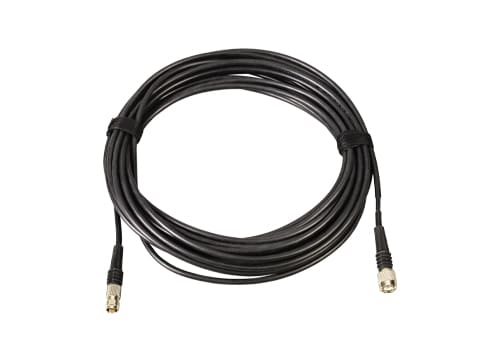
SC 26 Extension cable – TNC (plug) to TNC (socket) – for SV 12L preamplifier. The measurement cable is used for sound measurements when the preamplifier is mounted on a tripod. SC 26 is recommended for use with SV 977D and SVAN 958A sound and vibration level meters.
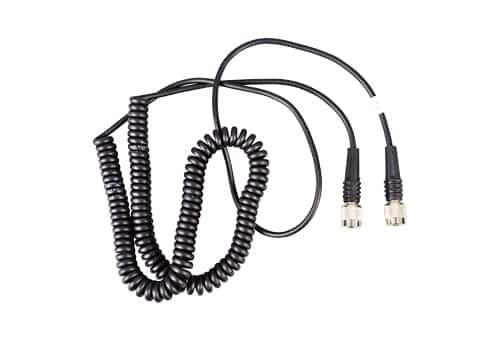
SC 27: TNC (plug) to TNC (plug) coil cable to vibration meter, 2 meters. The cable is used for connection of a uniaxial accelerometer to vibration meters such as the SVAN 974 or SVAN 958A for machine vibration measurements.
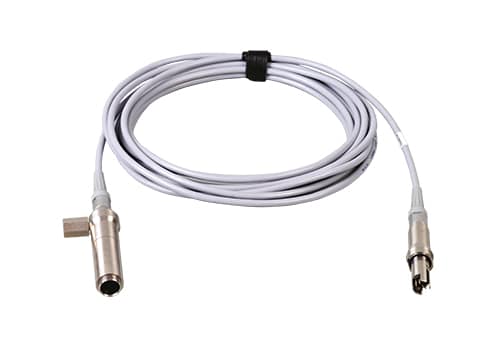
SC 91A Extension Cable (5 meters) to the SV18A preamplifier used in the SV 971A Class 1 Sound Level Meter and Analyzer. Use of an extension cable is recommended when measuring sound with the SA 271 outdoor kit.
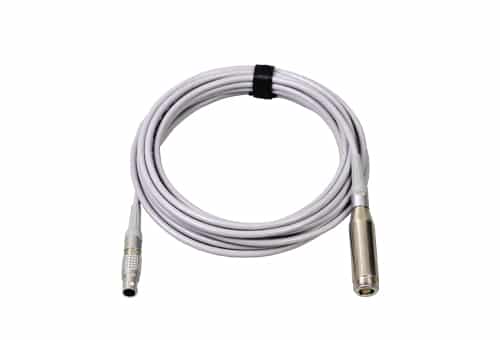
SC93 (5 m) extension cable to the SV 17 preamplifier in the SVAN 979 sound level meter. Use of an extension cable is recommended when using a tripod for sound measurements.
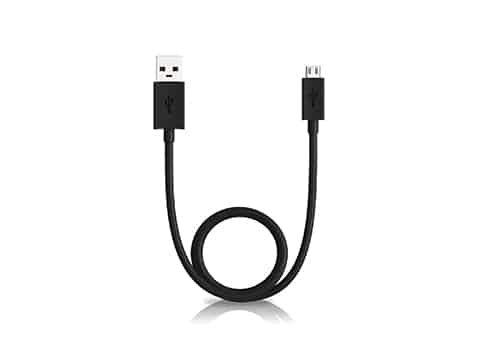
SC 156 communication cable (Micro USB to USB-A) to first-generation instruments such as the SVAN971 Sound Level Meter and SV104 Noise Dosimeter. A cable is used for connecting to the PC program (Supervisor, or SvanPC++).

SC 158 USB-C cable to new generation of SVANTEK instruments: SV971A, SV 973, SV 977D sound level meters & SV 106D vibration meter. The cable is used for connection to PC program (SvanPC++ or Supervisor).
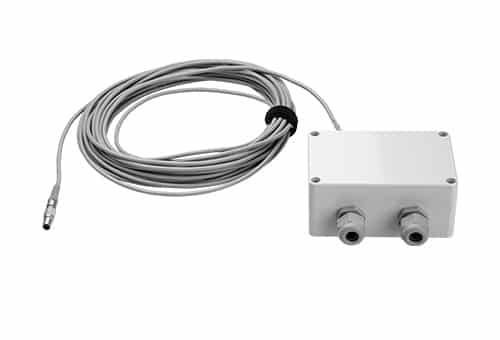
SC 333: solar panel cable for connection of a user’s solar panel to SV 307, class 1 noise monitoring station.
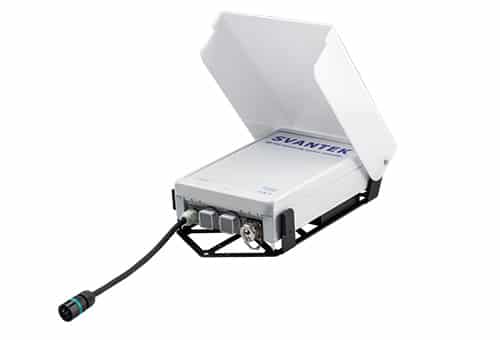
SD 310 Monitoring System Controller provides an extension of a noise and vibration monitoring system. The SD 310 enables the connection of external devices such as dust meters or weather monitoring stations to provide them with a power source and user interface. The user interface is generated by the built-in microcomputer and is accessible for the user in the form of a web user interface via WiFi connection. The measurement data from external devices is stored in the SD 310 memory and can be uploaded directly to the SvanNET Cloud.
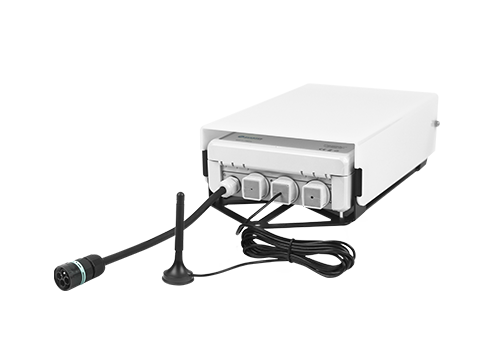
SD 311 is an advanced monitoring system controller designed for use in demanding environmental and industrial applications. This new generation model builds upon the proven reliability of its predecessor by integrating the Teltonika RUT956 industrial-grade router, enabling robust, flexible, and fail-safe communication across multiple interfaces. SD 311 features built-in GSM, Wi-Fi, Ethernet, and GNSS connectivity, ensuring reliable and versatile communication in the field. Its remote management capabilities, wide range of I/Os, and rugged industrial design allow for seamless integration with monitoring equipment and cloud-based systems. Ideal for environmental noise and vibration monitoring, infrastructure projects, construction sites, and smart city applications, the SD 311 delivers high performance and connectivity in even the most challenging conditions.
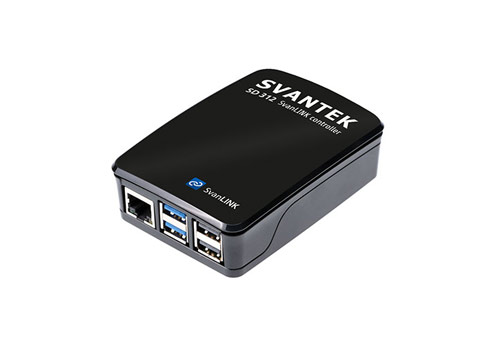
The SvanLINK controller is a smart device for connecting Svantek sound level meters and presenting the results of live noise measurements in places such as concert halls, production plants, schools or offices. The SD 312 controller set includes a dedicated SB 83 power supply and a USB-C cable. The SD 312 controller works with a wide range of SVANTEK instruments: SV 971A, SV 973A, SV 977D, SVAN 979, SV 303, SV 307A, SV 200A, SV 803 and SV 100A. This compatibility enables highly adaptable monitoring setups tailored to diverse acoustic and vibration-related applications.
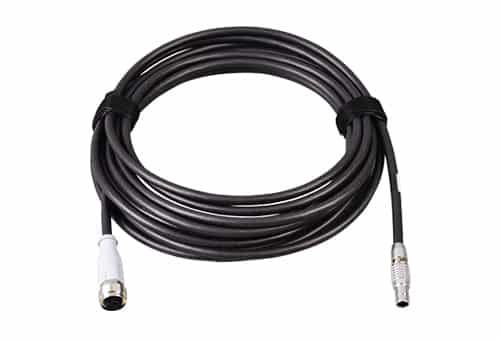
SC282/5 Cable for Accelerometer (SV84) and SVAN958A Four-Channel Sound and Vibration Meter and Analyzer (Class 1). The cable length is 5 meters. The cable is used for building vibration measurements.
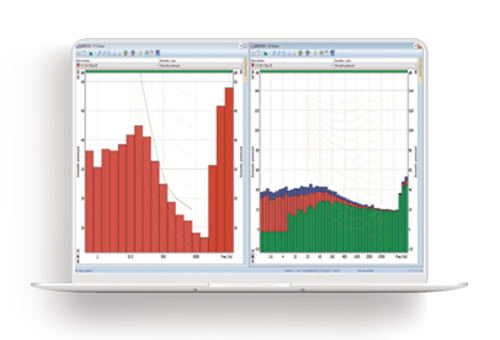
SF 303_3 – License for 1/1 & 1/3 octave for SV 303 noise monitoring terminal. Frequency analysis works in real-time and is stored together with noise monitoring data.

FTP Direct is a robust feature within Svantek measuring instruments that integrates both FTP push and FTP pull functionalities. FTP Push allows the instruments to automatically transmit data files directly to a client’s FTP server. This feature allows full control over the data, which is critical for sensitive and precise monitoring requirements found in sectors such as aviation, military, and manufacturing. On the other hand, FTP Pull enables the instruments to download and execute files from an FTP server, such as configuration settings that can be directly applied to the measurement process. Combining these capabilities, FTP Direct ensures efficient and seamless data management, facilitating both the remote updating of settings and the uploading of data for comprehensive analysis.

FTP Direct is a robust feature within Svantek measuring instruments that integrates both FTP push and FTP pull functionalities. FTP Push allows the instruments to automatically transmit data files directly to a client’s FTP server. This feature allows full control over the data, which is critical for sensitive and precise monitoring requirements found in sectors such as aviation, military, and manufacturing. On the other hand, FTP Pull enables the instruments to download and execute files from an FTP server, such as configuration settings that can be directly applied to the measurement process. Combining these capabilities, FTP Direct ensures efficient and seamless data management, facilitating both the remote updating of settings and the uploading of data for comprehensive analysis.
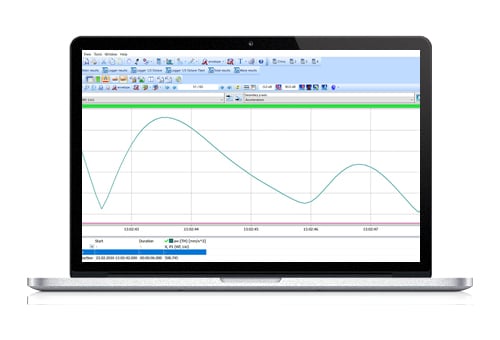
SF 100A-WF – Wf frequency weighting option for SV100A whole-body vibration dosimeter. The Wf filter is used from low-frequency vibration measurements (motion sickness) by ISO 2631-1.
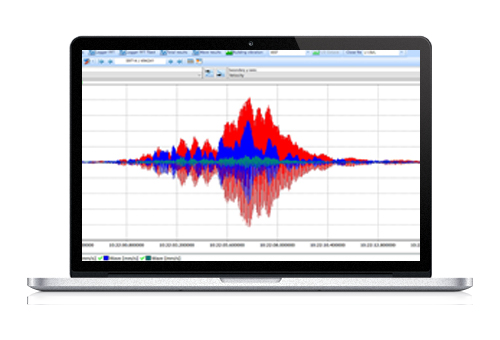
SF 100A-WAV – License for wave recorder for SV 100A whole-body vibration dosimeter. The WAV recording enables post-processing of the raw vibration signal.
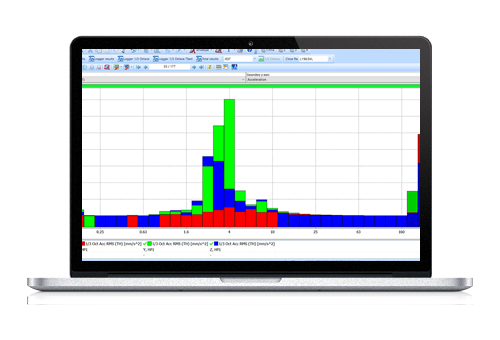
SF100A-3OCT: 1/1 and 1/3 octave license for whole-body vibration with the SV 100A vibration dosimeter. The function is very useful when measuring the vehicle vibration’s influence on a driver’s comfort.
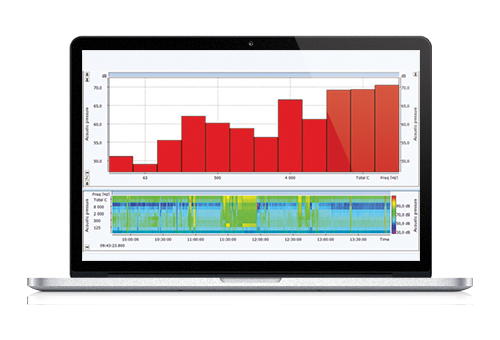
SF 102+3OCT-License of 1/1 & 1/3 octave analysis for SV 102+ dual channel noise dosimeter. The dual channel means that the dosimeter can measure occupational noise with two microphones simultaneously. The use of octave analysis helps to define noise sources and can be used for hearing protector selection.
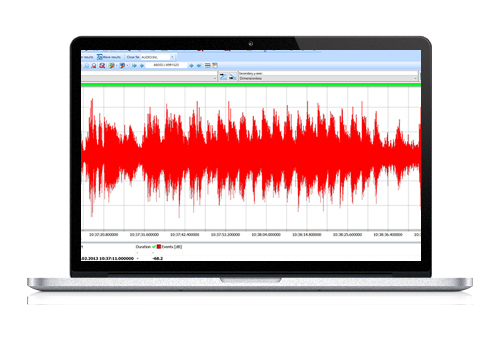
SF 102+REC-License of audio events recording for SV 102+ dual channel noise dosimeter. The function helps recognize noise sources when performing occupational noise measurements.

SF 102A+3OCT-License of 1/1 & 1/3 octave analysis for SV 102A+ dual channel noise dosimeter. The 1/3 octave analysis is required when performing measurements with a microphone in the ear (MIRE) to calculate the occupational noise dose value.

SF 102A+REC-License of audio events recording for SV 102A+ dual channel noise dosimeter. The audio recording function is used for occupational noise sources verification by playing back audio files in PC software.

SF 103-3OCT-License for 1/1 & 1/3 octave analysis for SV 103 hand-arm vibration dosimeter meeting ISO 8041-2 (2021). The third octave analysis is used for mechanical vibration sources verification.

SF 103-WAV-License of wave recording for the SV 103 hand-arm vibration dosimeter. The function records raw vibration signals in WAV format.

SF 104-WAV-License of audio events recording for SV 104 noise dosimeter. The function allows to verify occupational noise sources.
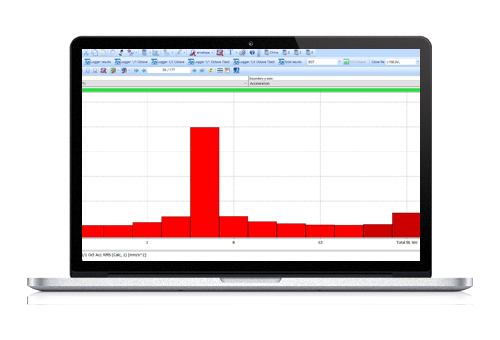
SF 104-OCT-License of 1/1 octave analysis for SV 104 noise dosimeter. The function helps to verify occupational noise sources and select hearing protection.

SF 104A-WAV-License of audio events recording for SV 104A noise dosimeter. The function is used for occupational noise sources verification.

SF 104A-3OCT-License of 1/1 & 1/3 octave analysis for SV 104A noise dosimeter. The octave analysis is used to classify occupational noise sources.
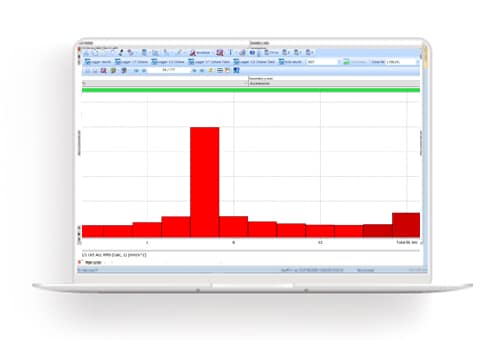
SF 104BIS-OCT: License of 1/1 octave for noise dosimeter SV 104BIS (intrinsically safe). The octave analysis enables hearing protector selection based on occupational noise measurements.
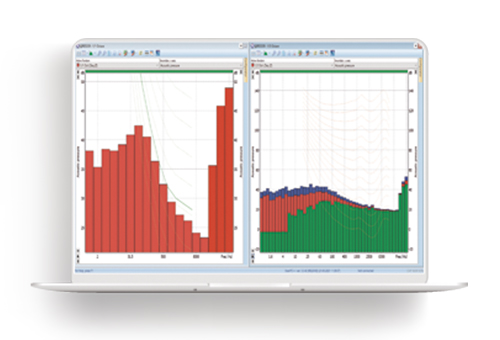
SF 104BIS_3OCT: 1/1 and 1/3 octave analysis to SV 104BIS intrinsically safe noise dosimeter. Function enables hearing protector selection based on occupational noise measurements.
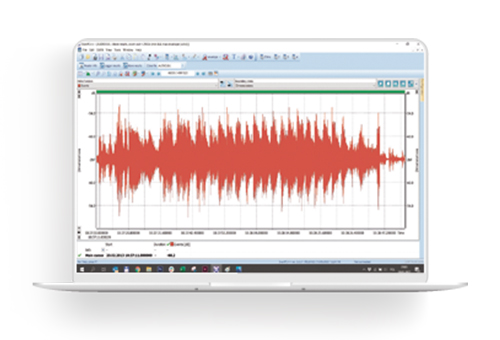
SF 104BIS-WAV: Audio Event Recording License for the SV 104BIS Intrinsically Safe Noise Dosimeter. The audio recording is helping to recognize noise sources when conducting noise dosimetry measurements.

SF 106-LIC-3 – License of 1/1 & 1/3 octave analysis for SV 106 hand-arm and whole-body vibration meter. Real-time frequency analysis.

SF106-LIC-15 – License for time domain signal recording for SV106 human vibration meter enables to record raw vibration signal to a wav file
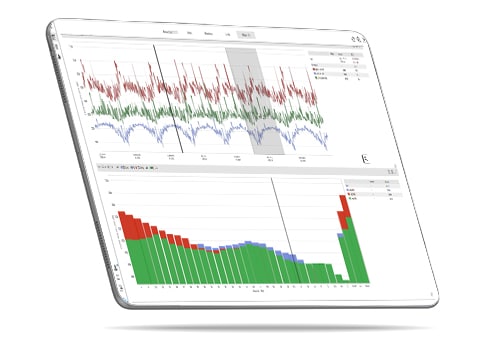
SF 307A_3 – License for 1/1 & 1/3 octave for SV 307A noise monitoring station. Frequency analysis works in real-time and is stored together with noise monitoring data.
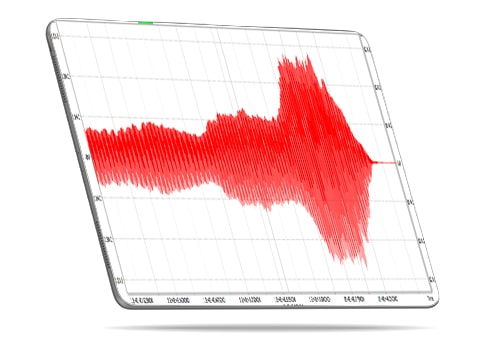
SF 307A-15: Audio recording license to SV 307A noise monitoring station. The function works simultaneously with the time history recording of noise results, allowing the environmental noise sources‘ recognition.

SF 307A-P1: license package (1/1 and 1/3 octave analysis options and audio events recording) for SV 307A noise monitoring station. Functions are used for noise source detection when conducting environmental noise monitoring.

SF-973-1-Option of 1/1 octave analysis to the SV 973 sound level meter. The function is used for sound measurement frequency analysis.

SF 971A-1 – License for 1/1 octave analysis for SV 971A class 1 sound level meter. The function works in real-time, simultaneously to sound measurement time-history recording.

SF 971A-2: License for 1/3 octave analysis for SV 971A sound level meter for noise sources recognition from noise measurements.
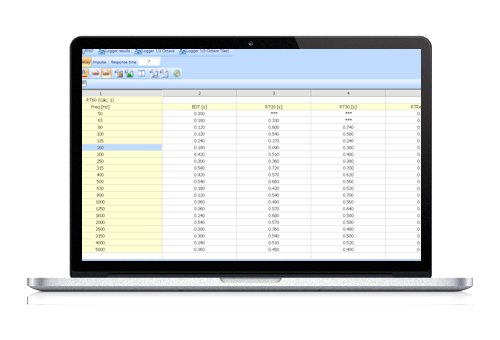
SF 971A-5, Reverberation Time Analysis (RT60) Option for SV 971A sound level meter. The RT60 is used for building acoustics and sound insulation measurements.
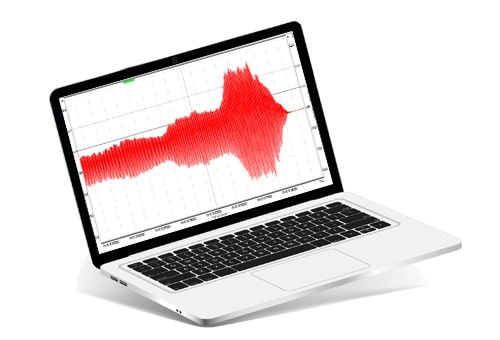
SF 971A-15: License for Audio Events Recording for SV 971A sound level meter. The option enables noise sources recognition.
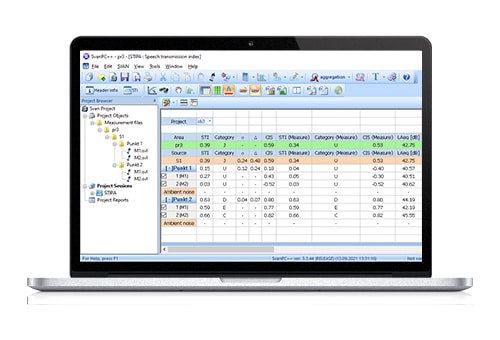
SF 971A-20 – Speech transmission index (STIPA) option for SV 971A sound level meter. The function is intended for public announcement systems testing.

SF 973-2-Firmware option of 1/3 octave analysis to SV 973 class 2 sound level meter. The option is used for sound measurement frequency analysis.

SF 973-5: RT60 option to SV 973 sound level meter. The is used for building acoustics and room acoustics (e.g. classroom).

SF 973-15-Option of audio recording to SV 973 class 2 sound level meter. The recorded sound can be played back to verify occupational noise sources.

SF 974-3-License of 1/1 & 1/3 octave analysis for SVAN 974 machine virbation meter. The function is used for machine vibration frequency analysis in real time.

SF 974-15 – License of time domain signal recording for SVAN 974 machine vibration meter. Raw signal to wav recording.
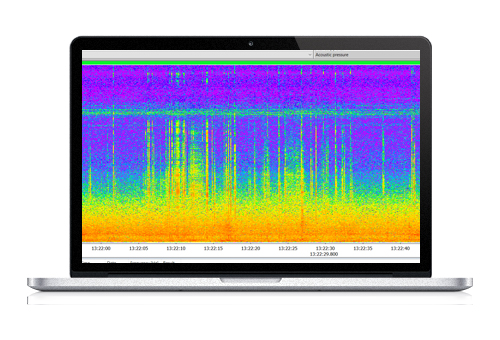
SF 977-4 – License of FFT analysis for SV 977 class 1 sound and vibration meter. The FFT is used for machine vibration measurements.

SF 977-5: Reverberation Time Analysis (RT60) Option for SV 977 Sound Level Meter. The RT60 option is activated by the activation code. The functionality of the RT60 is used for building acoustic measurements. The reverberation time can be calculated on the basis of 1/1 or 1/3 octaves; therefore, the activation of these options is needed. The reverberation time measurement is supported by the mobile application BA Assistant, which connects to SV 977 via Bluetooth interface.
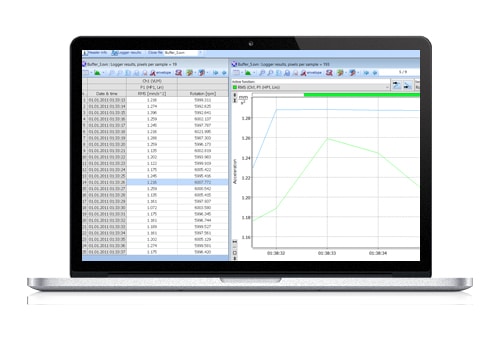
SF 977-8 – License of RPM measurements for SV 977 sound and vibration meter. Used for machine vibration and rotation speed.

SF 977-15 – License of time domain signal recording for SV 977 sound and vibration level meter (WAV format).

SF 958A_3 – License of 1/1 & 1/3 octave analysis for SVAN 958A for real-time sound and vibration frequency analysis in 4 channels

SF 958A-4 – License of FFT analysis option for SVAN 958A. FFT works in 4 channels set either for noise or vibration analysis.

SF 958A-8: RPM measurement license for the SVAN 958A for simultaneous sound and vibration measurement as well as rotation speed tracking. The application requires use of laser tachometer (SV RPM).
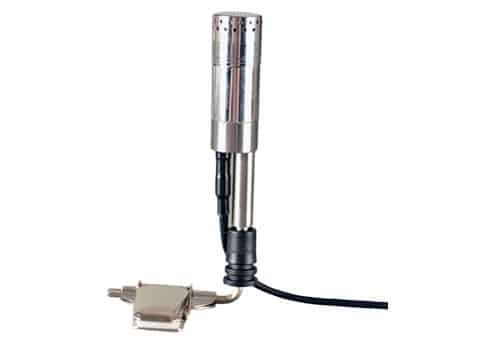
SV 15: Dosimeter preamplifier with TEDS and integrated cable for SV 102+ dual-channel noise dosimeter for class 1 sound measurements. Conducting occupational noise measurements also requires a SV 7152 microphone.
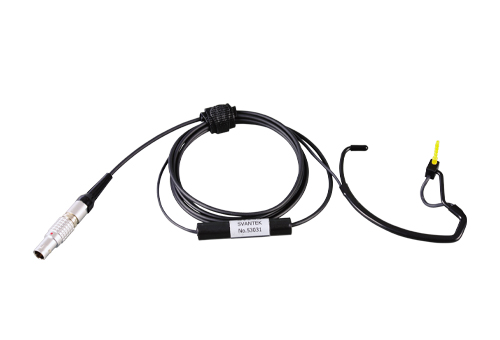
The MIRE microphone SV 25S uses a miniature probe at the entrance of the ear canal to measure the noise exposure (noise dose). The microphone works with the SV 102A+ noise dosimeter. The technique is called the microphone-in-real-ear (MIRE technique). It is applied when the noise source is placed close to the ear. A common application of MIRE is occupational noise measurements in call centers, where the primary sound source is a headset. The SV 25S can be also used to assess noise under headsets and pilots’ helmets. Following ISO 11904-1:2002, the MIRE requires the use of 1/3 octave analysis with A-weighting correction.
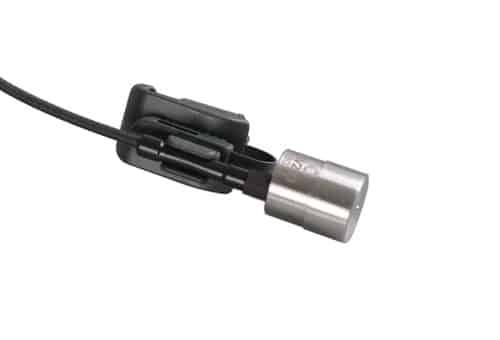
SV 25D_RED: Dosimeter microphone (marked in red) for a SV 102+ dual-channel noise dosimeter. Use two microphones on both sides of a head when performing occupational noise monitoring tasks.

SV 208A: Sound measurements set for SV 258 PRO Building Vibration and Noise Monitoring Station. The kit includes a MK 255 microphone, SV 12L preamplifier, SA 277 outdoor microphone kit, SA 270D, SC 277 cable, and carrying case. The SV 208A is used for outdoor noise measurements. It is made of lightweight materials for easy installation on a tripod. The windscreen can be easily detached to provide access for an acoustic calibration.
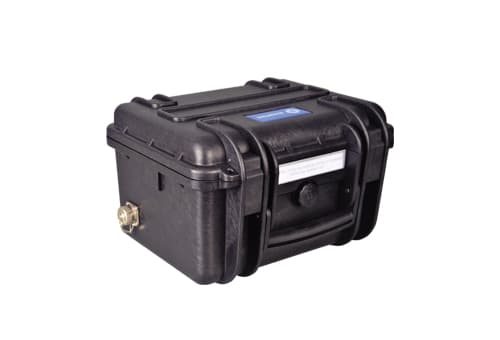
SM 258 PRO: Outdoor noise and vibration monitoring station for SVAN 958A The kit includes a waterproof case with an internal controller, backup battery, and charger. For vibration monitoring tasks, the building vibration accelerometer kit is required (SV 207B).

SM 277PRO: Outdoor noise monitoring station for SV 977 sound level meter The kit includes a waterproof case and an internal controller. For noise monitoring tasks, the additional microphone kit is required (SA 277).

SM 279PRO: Outdoor noise monitoring station for SVAN 979 class 1 sound level meter The SM 279 PRO is a waterproof case with an internal battery, charger, and connectors. For environmental noise monitoring, additionally, the SA 279 outdoor microphone kit and a measurement cable are required.
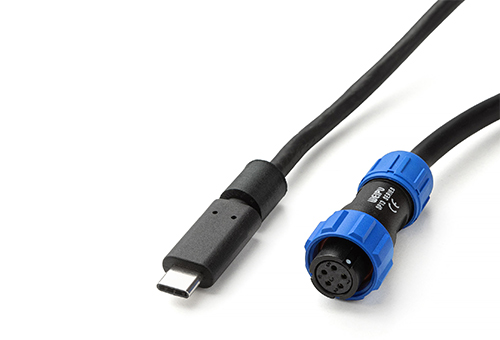
The SP 79 is a dedicated interface designed to connect the SV 303 Noise Monitoring Station with the SV 803 Wireless Vibration Monitor for synchronized environmental monitoring. By linking these two devices, the SP 79 enables the transmission of both noise and vibration data via the SV 803’s GSM modem to the SvanNET platform. This integration allows users to create comprehensive projects in SvanNET, where noise and vibration measurements are displayed together—providing a unified and real-time overview of environmental conditions. With its plug-and-play design, the SP 79 ensures quick and easy setup, making it an ideal solution for applications that require coordinated noise and vibration monitoring, such as construction sites, industrial operations, and urban monitoring projects.
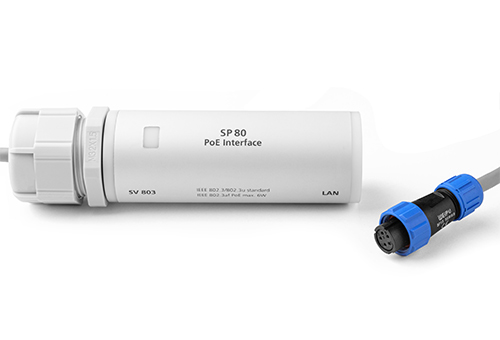
The SP 80 is a LAN interface with Power over Ethernet (PoE) tailored for the SV 803 Wireless Vibration Monitoring Station from SVANTEK, providing enhanced deployment capabilities and reliable power/network integration. Key Features: Power and Data over One Cable: Combines Ethernet connectivity and power delivery, reducing cabling complexity and installation time. Reliable Communication Link: Maintains stable, high-speed data transmission for real-time vibration analysis and remote access. Designed for Tough Environments: Perfect for construction sites, urban infrastructure projects, or remote monitoring points where conventional power sources are unavailable. Pairing the SP 80 with the SV 803 allows for efficient, real-time vibration monitoring in demanding environments—ideal for compliance monitoring, structural diagnostics, and smart infrastructure management.
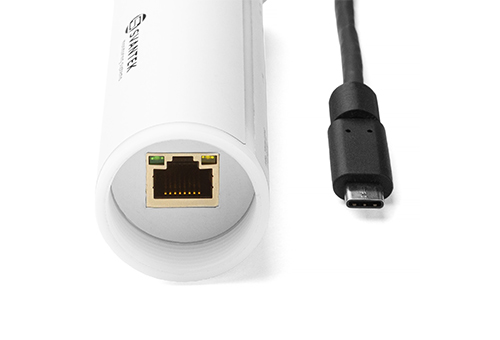
SP 82 is a dedicated LAN interface with Power over Ethernet (PoE) designed for the SV 303 Urban Noise Monitoring Terminal from SVANTEK. It enhances connectivity and simplifies deployment in both permanent and temporary environmental noise monitoring setups. Key Features: Streamlined Installation: Uses a single Ethernet cable for both power and data transmission, eliminating the need for separate power infrastructure. Stable Network Communication: Ensures reliable and continuous data transfer from SV 303 to remote monitoring platforms or cloud-based systems. Flexible Mounting Options: Ideal for installations on lamp posts, building facades, or other outdoor environments where access to power is limited. With the SP 82, SV 303 becomes a truly autonomous noise monitoring station, offering dependable, real-time acoustic data crucial for smart city applications and environmental compliance.
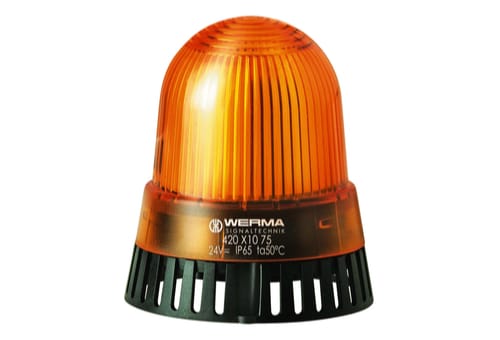
SP 272: Alarm lamp (beacon) with a buzzer for vibration monitoring. When vibration exceeds the limit, the lamp and buzzer start an alarm. The SP 272 is connected directly to the SV 258 PRO vibration monitor. Visual and audible alarms are very useful during construction work to prevent vibration limits from being exceeded.
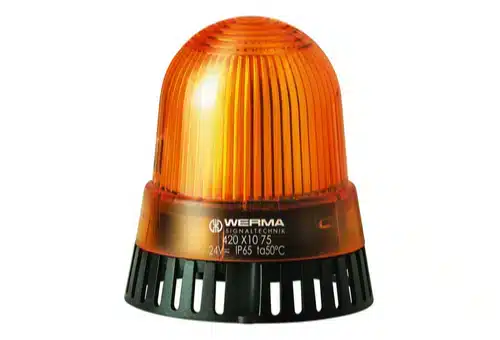
Alarm lamp and buzzer with cable 5 meters long to SV 803 vibration monitoring station

SP 275: Weather Station to Svantek PRO Noise Monitoring Stations. It measures six weather parameters: wind speed and direction, precipitation, atmospheric pressure, temperature, and relative humidity. These factors have a great impact on noise propagation in the air. Therefore, weather data measurements are required when performing environmental noise monitoring. SP 275 is a small and lightweight weather station, which makes installation much easier. The direct connection to a noise monitoring station enables storing the weather data together with the noise in a time-history file.
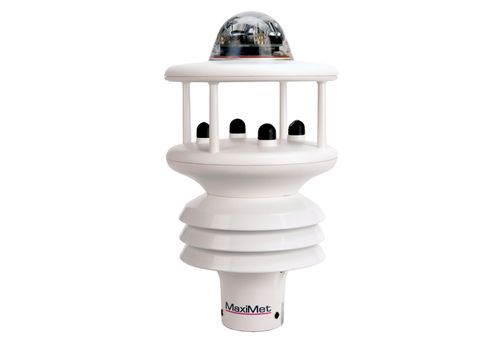
SP 276 is a weather station for use with SV 307 and SV 307A noise monitoring stations. The SP 276 measures wind speed and direction, ambient temperature, humidity and pressure, and precipitation. The results are stored together with noise monitoring data in time history files inside the Svantek station memory. The SP 276 can be mounted on a SA 306 mounting arm (optional).
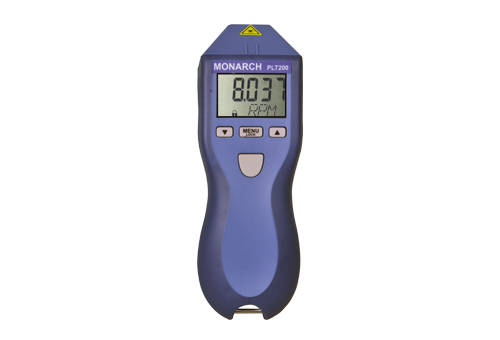
Laser Tachometer (SV-RPM) with SC 74 cable for machine vibration and rotation speed measurements with Svantek vibration meters. The rotation speed data (RPM or RPS) is logged together with vibration results, providing a simple order tracking (vibration vs. rotation). The use of a laser tachometer requires the activation of a firmware license for rotation speed measurements.

SV 207B, Building Vibration Measurement Set for SVAN 958A and SV 258 PRO monitoring stations. The weight of a metal base ensures a sufficient coupling for floor vibration measurements in buildings. For measurements on building walls, the accelerometer can be used without the metal base. The set consists of a SV 84 vibration accelerometer and a SA 207B metal base. For connection to SVAN 958A, the measurement cable SC 282 is needed. For measurements with the SV 258 PRO, the SC 278 cable should be selected, but it is already included in the SV 258 PRO together with the SV 207B.
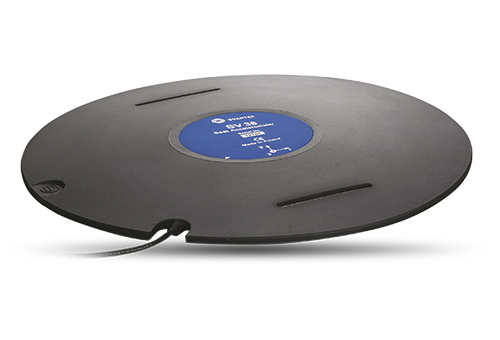
SV 38 is a seat accelerometer for vibration measurements with the SVAN 958A four-channel analyzer. For whole-body vibration measurements, the accelerometer is placed on a driver’s seat or seat backrest. The SV 38 accelerometer is based on MEMS triaxial transducers and meets ISO 8041:2005 and ISO 2631-1 requirements. For periodic verification at the calibration laboratory, the accelerometer can be easily removed from the seat pad and installed on a shaker with a dedicated SA 38 adapter (optional). For an in-situ calibration, the SV 38 can be mounted on an SV 111 vibration calibrator. The SV 38 number of axes is 3. It’s sensitivity is 100 mV/(m/s2) at 15.915 Hz. The accelerometer’s measurement range is from 0.01 m/s2 RMS to 50 m/s2 PEAK in the frequency range from 0.1 Hz to 100 Hz.
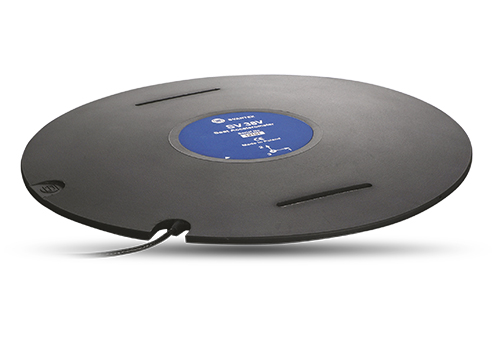
The SV 38V seat accelerometer is dedicated to whole-body vibration measurements with the SV 106 human vibration meter. The accelerometer has a built-in memory (TEDS) containing information about the sensitivity that is automatically transferred to the SV 106 instrument. By ISO 2631-1, seat accelerometers such as the SV 38V are placed on the operator’s seat, either on the seat backrest or on the seat cushion. The use of an SV-111 vibration calibrator is recommended for in-situ calibration checks. SV 38 is based on MEMS transducers which means it uses less power and is more robust than piezoelectric sensors. The SV/38V number of axes is 3 (triaxial). At 15.915 Hz, its sensitivity is 50 mV/(m/s2). The measurement range is from 0.01 ms2 RMS to 50 ms2 PEAK in the frequency range of 0.1 Hz to 100 Hz.
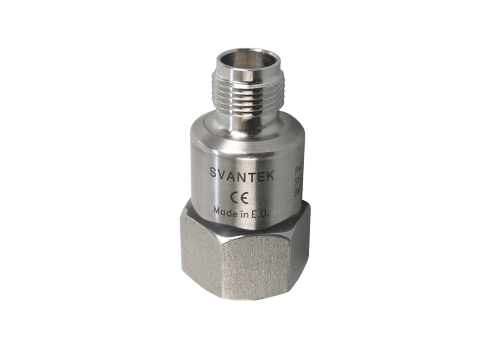
SV 80 is a 100 mV/g accelerometer dedicated to machine vibration measurements with SVANTEK vibration level meters. The vibration accelerometer is uniaxial, which means it measures vibration on one axis. The SV 80 is connected to SVANTEK vibration meters with a vibration measurement cable with a TNC connector. For machine vibration measurements, the sensor is typically attached to a vibrating surface with a mounting magnet. The accelerometer 100mV/g is an ideal choice for walk-around vibration measurement in the rugged environments of industrial machinery monitoring, such as pumps, motors, etc. The sensitivity of the SV 80 is 10 mV/(m/s2) 100 mV/g. The measurement range is from 0.01 m/s2 RMS to 500 m/s2 peak in the frequency range of 0.5 Hz to 14 000 Hz.

SV 81 is an industry-standard IEPE accelerometer 500mV/g offered to Svantek’s vibration level meters (974, 977A, 979, 958A). The accelerometer’s high sensitivity and low electronic noise enable measurements of very low levels of machine vibration amplitudes over the typical machines’ frequency operating ranges. For vibration measurements, the accelerometer is usually used with a measurement cable and is mounted on a vibrating surface with a SA 27 mounting magnet. The SV 81 accelerometer measures vibration acceleration on a single axis. It’s sensitivity is 50 mV/(m/s2) ~ 500 mV/g. The measurement range is from 0.002 m/s2 RMS to 100 m/s2 Peak in the frequency response range from 0.2 Hz to 3700 Hz.
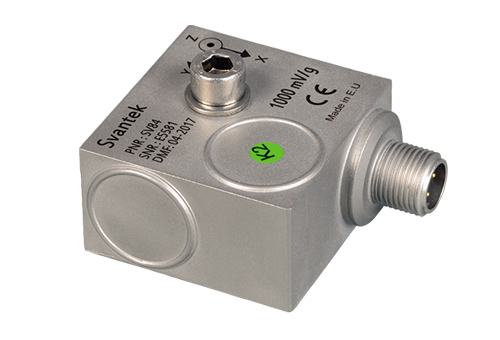
SV 84 Triaxial Accelerometer 1000 mV/g is dedicated to building and ground vibration measurements with Svantek vibration monitors. The transducer is hermetically sealed and it can be used outdoors without additional housing. The mounting to a building wall is easy thanks to a mounting hole. Signal ground is isolated from the mounting surface and outer case to prevent ground loops. For the connection to SVAN 958A, a four-channel vibration meter and an extension cable (SC 282) are recommended. The SV 84 uses 3 axes. Its sensitivity 100 mV/(m/s2) ~ 1000 mV/g. Measurement range is from 0.0005 m/s2 RMS to 50 m/s2 Peak in frequency range from 0.2 Hz to 3 700 Hz. Connector M12, M6 mounting hole.
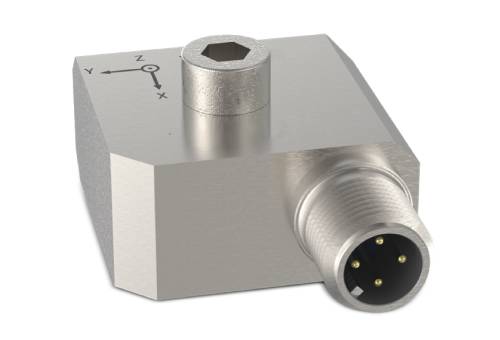
SV 85 is a triaxial accelerometer (IEPE) for vibration measurements with the SVAN 958A vibration meter. The accelerometer housing is hermetically sealed and suitable to monitor the vibration in a harsh industrial environment. Signal ground is isolated from the mounting surface and outer case to prevent ground loops. The sensitivity of SV 85 is sensitivity 10 mV/(m/s2). The measurement range from 0.005 m/s2 RMS to 500 m/s2 Peak in frequency range from 0.5 Hz to 13 000 Hz (Z axis); 0.5 Hz to 10 000 Hz (X, Y axis). The accelerometer weight is 117 grams. For calibration with a vibration calibrator, the SA 154 adapter is recommended.
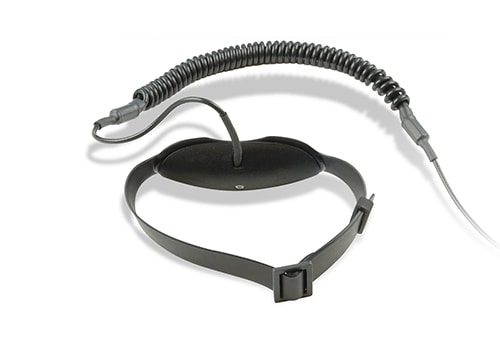
SV 105D triaxial accelerometer is dedicated to hand-arm vibration measurements with SV 106D six-channel analyzer. The accelerometer has TEDS memory that stores information about SV 105D sensitivity and transfers it to the SV 106D instrument. An accelerometer is supplied with three adapters to perfectly match the grip of different vibrating tools: SA 150, SA 151, and SA 152. Each adapter includes an adjustable rubber strap for firm and comfortable attaching the accelerometer to the human’s hand. For in-situ checks and periodic verification of the SV 105D, the SA 105 adapter (option) is necessary.

SV 105DF: Hand-arm vibration accelerometer with force detection for SV 106D human vibration meter. The accelerometer has TEDS memory that remembers the calibration factor transferred to the SV 106D instrument. The accelerometer is supplied with three adapters to perfectly match the grip of different vibrating tools. Each adapter includes an adjustable rubber strap for firmly and comfortably attaching the accelerometer to the human’s hand. This solution significantly limits disturbances to the operator, who doesn’t have to worry about holding the accelerometer. The accelerometer is designed according to ISO 5349-2 to measure simultaneous triaxial vibration and contact force. The use of contact force enables to exclude periods of time when a hand is not with a contact with the vibrating tool. For in-situ calibration and periodic verification, the SA 105D adapter (option) is necessary.
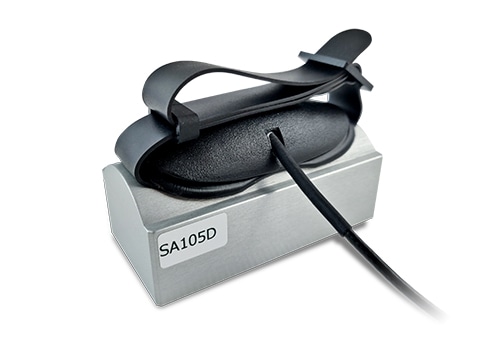
SA 105D – Calibration adapter for SV 105D hand-arm vibration accelerometer. The adapter is required for vibration calibration of a hand-arm vibration sensor connected to an SV 106D human vibration meter or an SV 103 hand-arm vibration dosimeter. The adapter is suitable for in-situ checks as well as calibration at an accredited laboratory.
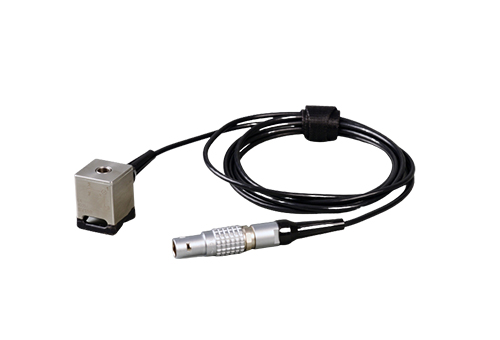
SV 150 is a tri-axial accelerometer (MEMS) for hand-arm vibration measurements. The sensor is dedicated to being used with the SV106 human vibration meter. SV 150 is MEMS type which means it is more robust and uses less power than a traditional piezo-electric accelerometer. The sensor is mounted on a tool handle near the hand to assess vibrations transmitted to hands and arms. Three metal clamps for mounting on a handle are provided. For vibration measurements, the SV 150 accelerometer can be used simultaneously with a hand-accelerometer SV 105 to assess the vibration transmission to a hand. Measurement range of SV 150 triaxial accelerometer is 2000 m/s2 PEAK in the frequency range from 0 Hz to 1500 Hz (± 3 dB). For calibration with a vibration calibrator, the adapter SA 155 is recommended.
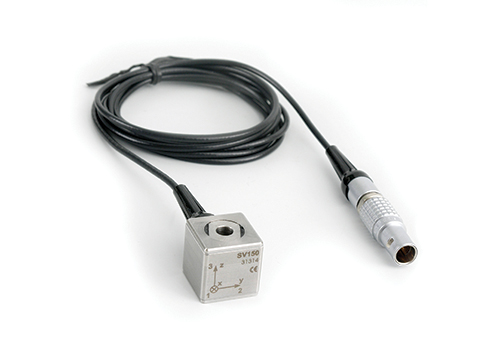
SV 151 is a vibration MEMS accelerometer. The sensor is triaxial, which means it measures vibration acceleration in three directions (3 axes) simultaneously. The main application of SV 151 is whole-body vibration measurement with the human vibration meter SV 106. Typically, the accelerometer is attached to a vehicle’s floor under the seat to measure floor vibration transmitted to a human body from the floor. The SV 151 can be used simultaneously with a second triaxial accelerometer placed on a vehicle seat. The vibration data from SV151 placed on a floor and seat accelerometer can be used for the calculation of seat vibration transmission. So-called SEAT measurement provides an answer if the seat attenuates or amplifies vibration levels. Measurement range of SV 151 triaxial accelerometer is 160 m/s2 PEAK in the frequency range from 0 Hz to 500 Hz (± 3 dB). For calibration with a vibration calibrator, the adapter SA 155 is recommended.
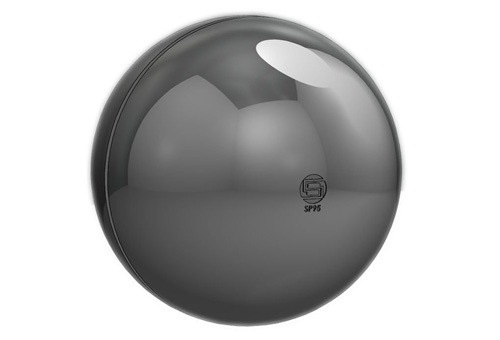
The SP 95 impact ball is used for testing building acoustics and sound insulation in lightweight structures where a standard tapping machine (impact sound source) would produce too much impact force. It has been designed by ISO 10140-5 and ISO 16283-2 standards. The use of the SP 95 Impact Ball is very easy: it is dropped vertically in a free fall from a height of 100 cm to the surface of the floor. In practice, SP 95 can be used to assess soft impacts related to human disturbance, such as children jumping. The SP 95 is used for low-frequency impact noise insulation tests in the octave bands from 31.5 Hz to 500 Hz. The weight of 2.5 kg. The kit includes a comfortable carrying bag for transportation.
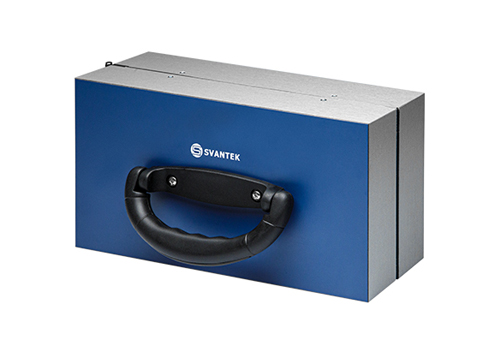
The SP 91 is a hand-operated acoustic pulse source designed for measuring the reverberation time (RT60) of small and medium-sized rooms and open or echoey spaces of up to approximately 200 m² (600 m³). With peak sound levels of up to 125 dBC, the SP 91 delivers a strong, broadband impulse that is ideal for accurate acoustic decay analysis. It's simple, purely mechanical design ensures consistent and repeatable results, eliminating the need for batteries or external power. The SP 91 offers a sustainable and durable alternative to disposable sound sources, such as balloons, making it ideal for building acoustics measurements and educational demonstrations. Each set includes the acoustic pulse source SP 91, hearing protection and a lightweight carrying bag for easy transportation and storage.
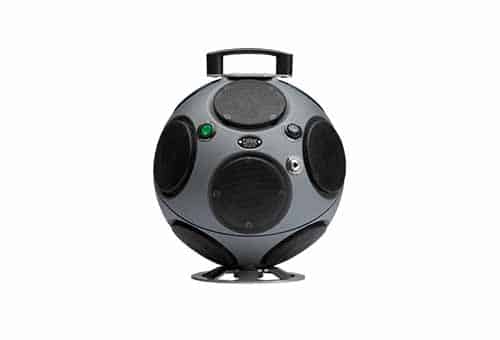
SV 90/103 is a omnidirectional sound source dedicated to building acoustics and room acoustics measurements. Compliant with international standards, the sound source offers unique features such as an integrated power amplifier and a built-in equalizer inside an ultra-lightweight speaker. The kit includes a 250mm diameter speaker with 150W RMS power, a dedicated remote controller for the amplifier and generator, a power cable, tripod, and a durable transport case. An additional advantage of the kit is a portable battery, allowing for hundreds of measurements without needing to recharge the battery.
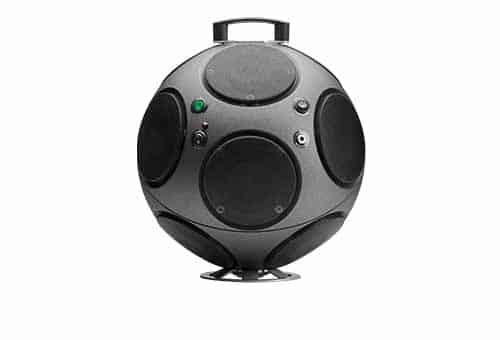
SV 90/303 is a omnidirectional sound source dedicated to building acoustics and room acoustics measurements. Compliant with international standards, the sound source offers unique features such as an integrated power amplifier and a built-in equalizer inside an ultra-lightweight speaker. The kit includes a 330mm diameter speaker with 300W RMS power, a dedicated remote controller for the amplifier and generator, a power cable, tripod, and a durable transport case. An additional advantage of the kit is a portable battery, allowing for hundreds of measurements without needing to recharge the battery.
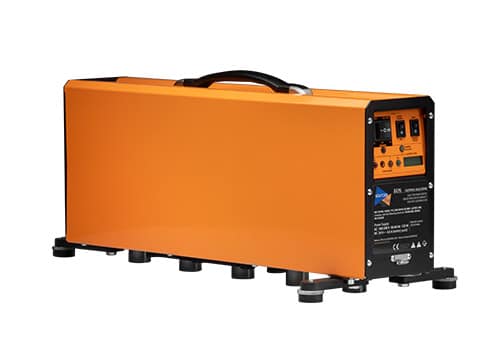
The SV 93 tapping machine is a portable, lightweight impact sound source for building acoustic measurements. It uses an electromagnetic lifting system with five hammers, controlled by a microprocessor for precise timing. The device operates on mains power or an inbuilt battery that lasts for 1 hour. The standard SV 93 Impact Sound Source kit, includes five steel hammers, a bottom cover, a 433.92 MHz wireless remote control kit, a Ni-Mh battery pack with a 5-meter AC cable, and a transport bag.
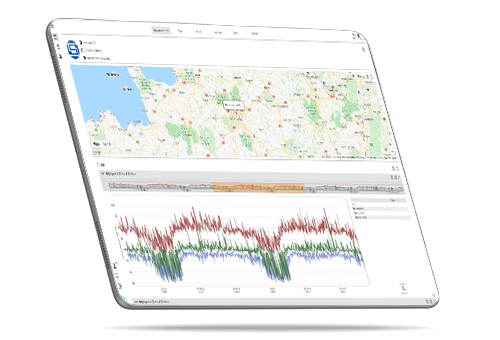
SVANNET-1A: Automatic Monitoring Service; annual subscription for 1 monitoring station (noise or vibration). SvanNET is an online service for automated noise and vibration monitoring tasks.
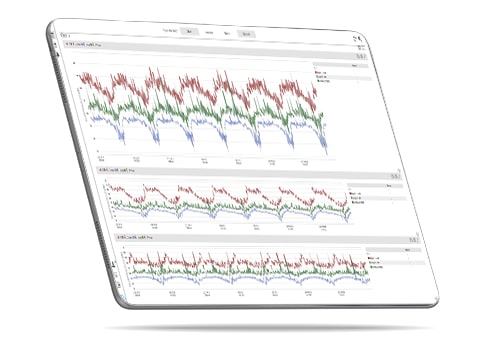
SVANNET-LISTENING-A: A 1-year subscription for on-line audio listening from the SV 307A noise monitoring station. The function is not dependent on wav recording in the monitoring station. The audio-listening method allows quick verification of noise sources in noise monitoring.

SVANNET-5A – 5 stations account subscription – 1 year. For 5 monitoring points (noise or vibration), use full SvanNET functionality. SvanNET is an online service for automated noise and vibration monitoring tasks.

The SvanPC++ Environmental Monitoring module is PC software for data post-processing. The main software applications are environmental noise monitoring and ground and building vibrations. The software provides functions such as: time-history data analysis, calculations on frequency spectra and statistics, marking unwanted periods and removing them from calculations, recalculation of original time-history records into longer intervals, reporting tool with results presented in text, table, and graphic forms. The software provides tools for the management of data stored in various file types, gathered across given measurement activities, like measurement data, calculation results, views, photos, graphics, pictures, and report templates. The module works as an extension of the standard SvanPC++ software functionality. After the purchase, the license is not limited by the time of usage.
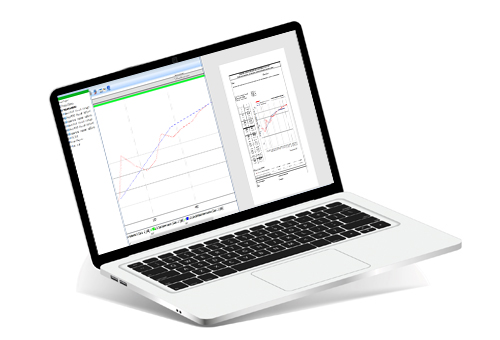
SvanPC++ Building Acoustics module is an extension of SvanPC++ software. The module provides building acoustic projects management functionality dedicated to collecting measurement files, assigning files to appropriate categories (rooms or dwellings), defining rooms or dwellings, and using a specialized wizard for calculations of airborne and impact sound insulation. The module employs SVANTEK sound level meter reverberation time results, as well as automatic and user-defined reverberation time calculation from time-history data. An important functionality of SvanPC++BA is sound insulation reporting by ISO standards.
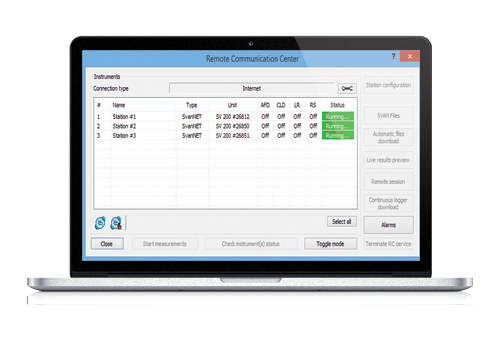
SvanPC++RC Remote Communication Module is a PC software extension to SvanPC++. The module serves as a remote communication tool with Svantek monitoring stations, using different interfaces: direct connection by RS232 or USB cable, GPRS modem, Internet, and LAN (Ethernet). SvanPC++RC supports downloading measurement results from instruments to the PC and also manages instrument settings (the Setup Editor). Support of multiple instruments and advanced alarm functions (e.g., sending text messages) were also implemented in the RC module. Measurement data can be downloaded regularly or at a user’s request. Advanced options for remote sessions that offer online data monitoring are also available. SvanPC++RC is a predecessor of SvanNET Automatic Monitoring Services, which is a cloud solution (easier to use).
Explore the full range of SVANTEK accessories and build a measurement system that meets your precision goals.